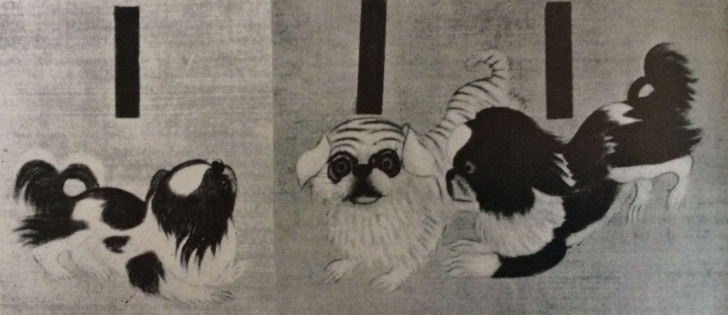
Hundreds of years ago in ancient China, a dog existed called the Lo-sze. We know from a dictionary of Chinese characters commissioned by Emperor Kang Hsi in 950 A.D. of references to dogs with short legs and a short head. Scrolls, illustrations, and additional records from the first century further suggest that these dogs resembled a smaller version of today’s Pug, but with less wrinkling on the face. In fact, these dogs are believed to have been the predecessors of today’s modern Pug.
Serving as companions to Chinese royalty, the dogs were also kept for religious purposes by the privileged. Breeding them was permitted only within the Imperial palaces, and any person found in unlawful possession of one faced execution.
By the 14th century, the Chinese were interbreeding three types of the small dog that existed in their country, and in the latter part of the 1500s and early 1600s, China began trading with European countries. After traders returned home to Spain, Holland, England and Portugal with three types of Pugs, standardization began towards the longer legged black or fawn Pug we know today. The original Lo-sze, however, became extinct and stayed that way for hundreds of years.
We fast forward to 1998. After researching the history of the Pug and its older Chinese ancestors, Rebecca Manns became disappointed at discovering that the original traits of the Lo-Sze had been lost, and decided to recreate the ancient Lo Sze under the name, “American Lo-Sze Pugg™. Indeed, she trademarked the name and only puppies approved as “American Lo-Sze Pugg” puppies may be considered to be authentic American Lo-Sze Puggs. She bred the dogs to have what she believed to be traits of early Lo-Sze dogs: Slightly shorter legs, longer muzzles, a wide skull flat between the ears, wide between the eyes, and a nose with wide nostrils of any color. The dogs are said to be bright, sociable, and entertaining, but they are not without health issues.
The breed is not recognized by major kennel clubs, but can be registered with the Dog Registry of America or the International Rare Breed Dog Club. We share this information in the interest of edifying our readers should they come across mention of the breed. Also, we don’t have permission to post private images of the breed, but the best photo we found may be seen here.
Image: Lo-sze and Happa dogs from an imperial dog scroll, 1890.

I can see a similarity to the peke, not so much to the pug.
I see the Tibetan Spaniel, coat, tail set, head and size